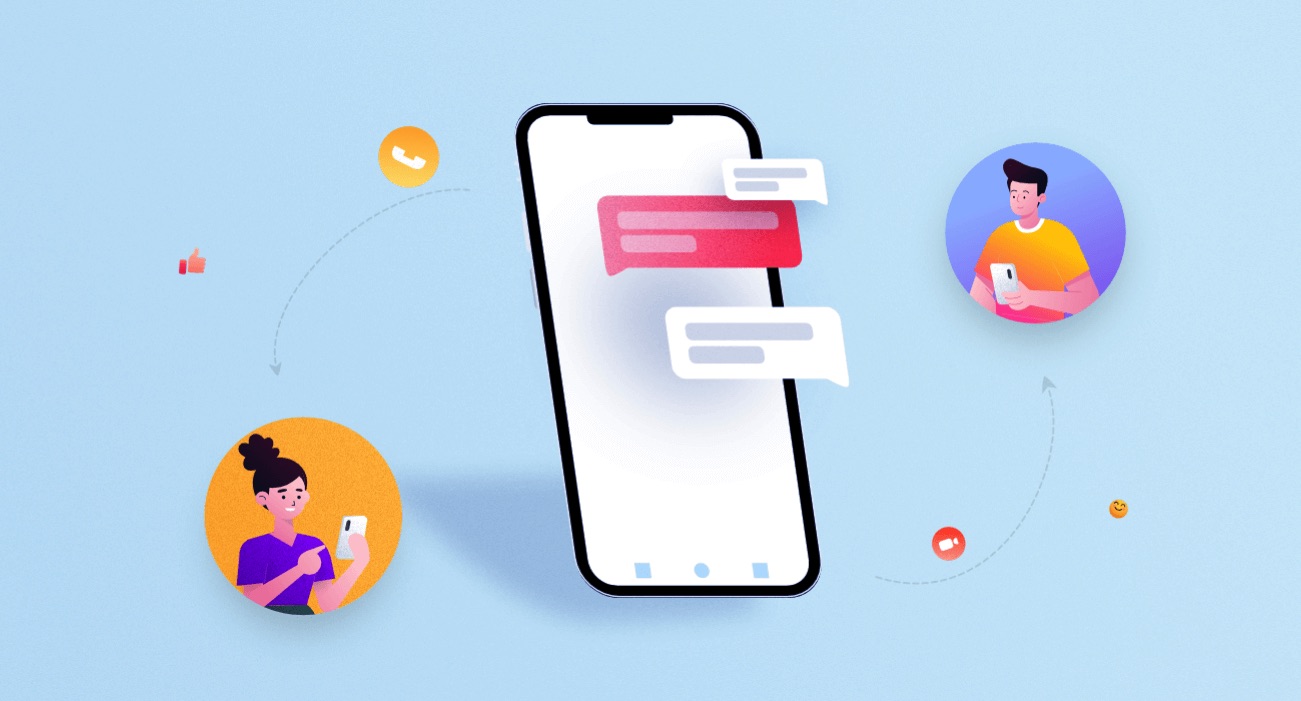Are you tired of the cold-calling shuffle? Does the thought of endless emails to disinterested prospects leave you feeling deflated? You’re not imagining it— traditional outbound marketing tactics are becoming increasingly ineffective. In fact, inbound tactics are shown to generate a whopping 54% more leads than those cold outreach methods.
Imagine a world where you let potential customers come to you. They arrive at your digital doorstep, intrigued by your brand and eager to learn more. That’s the allure of an inbound marketing funnel.
This guide, brought to you by the Flyrise inbound marketing team, will show you how to ditch outdated outreach methods and build a powerful inbound marketing funnel. We’ll unveil the secrets to attracting high-quality leads, nurturing them into loyal customers, and ultimately, turning your website into a conversion powerhouse that runs on autopilot.
Let’s stop chasing and start attracting!
Mastering the Inbound Marketing Funnel
Picture the customer journey. Potential customers typically start broad in their search for solutions, then gradually narrow down their options until they discover your product or service. And that’s the essence of the inbound marketing funnel: a strategic framework designed to capture website visitors at various stages of their buying journey and funnel them into loyal, lifelong customers.
Why is an inbound marketing funnel so attractive? Because it flips the script on traditional marketing tactics. Instead of relentlessly chasing leads, you attract them with valuable content and nurture them with targeted information. Here are a few of the key benefits of inbound marketing:
- Increased Brand Awareness: By creating informative content that addresses your target audience’s needs, you establish yourself as a thought leader in your industry, making your brand more recognizable and trustworthy.
- Higher Lead Generation: Through strategic inbound tactics, you attract qualified leads who are genuinely interested in what you offer. This translates to a higher volume of leads entering your sales funnel.
- Improved Lead Nurturing: The inbound funnel allows you to nurture leads with targeted content and messaging, guiding them through the decision-making process and ultimately converting them into paying customers.
- Boosted Sales and Customer Retention: By attracting the right leads and nurturing them effectively, you build stronger relationships that translate into increased sales and loyal customers who are more likely to stick around for the long haul.
Inbound Marketing Funnel Stages
Think of your inbound funnel as a series of stages, each one designed to move potential customers closer to a conversion. While specific models may vary, a common framework includes three core stages:
- Attract: This stage focuses on drawing in website visitors with valuable content like blog posts, social media engagement, and SEO optimization. The goal is to capture their attention and establish yourself as a trusted resource.
- Convert: Once visitors are engaged, the focus shifts to converting them into leads. This might involve offering resources (e-books, white papers, free webinars, etc.) in exchange for contact information.
- Close: With qualified leads in your pipeline, the final stage is about nurturing them toward a purchase decision. This involves providing targeted content like case studies, product demos, and personalized communication from your sales team.
Inbound vs. Outbound Marketing: Key Differences
As previously mentioned, there are two main approaches to reaching your target audience: inbound and outbound marketing. But what exactly sets them apart?
Inbound Marketing:
Inbound marketing is all about attracting customers with valuable content that addresses their pain points and interests. It’s a permission-based approach, where you build trust and relationships by providing genuinely helpful information. Think blog posts, social media engagement, SEO-optimized content, and downloadable resources – all designed to draw potential customers in and nurture them through the buyer’s journey.
Outbound Marketing:
Outbound marketing, on the other hand, is the traditional method of reaching out directly to potential customers. This could involve tactics like cold calling, email blasts, TV commercials, or print ads. While outbound marketing can still be effective in some situations, it can also feel intrusive and impersonal.
Let’s break down the key differences:
| Feature |
Inbound Marketing |
Outbound Marketing |
| Focus |
Pulls customers in. |
Pushes messages out. |
| Cost |
More cost-effective
in the long run. |
Can be expensive, especially for traditional media. Inbound leads cost 61% less, on average, compared to outbound leads. |
| Control |
More control over the customer journey. |
Limited control over how your message is received. |
|
Permission-Based |
Yes, builds trust with potential customers. |
No, can be seen as intrusive. |
| Conversions |
Higher conversion rate. Inbound
marketers double the average site
conversion rate, from 6% to 12% total. |
Lower conversion rate, on average. |
Exploring Inbound Marketing Channels
Now that you understand the power of inbound marketing and how it differs from traditional outbound tactics, it’s time to explore the various channels you can leverage to attract and nurture leads. Remember, the key is not to rely on a single channel but to create a cohesive strategy that uses a combination of these powerful activities.
Here are some of the most effective and popular inbound marketing channels:
- Social Media Marketing: Social media platforms like Facebook, LinkedIn, Twitter, Instagram, TikTok, and YouTube offer a fantastic way to connect with your target audience, share valuable content, and build brand awareness. By consistently posting engaging content, participating in relevant conversations, and running targeted social media campaigns, you can attract potential customers and establish yourself as a thought leader in your industry.
- Search Engine Optimization (SEO): SEO involves optimizing your website and content to rank higher in search engine results pages (SERPs) for relevant keywords. This ensures that potential customers searching for solutions related to your offerings can easily discover your website. Effective SEO strategies involve keyword research, on-page optimization, content creation, and link building.
- Content Marketing: Content is king in the inbound marketing world! By creating high-quality, informative content that addresses your target audience’s needs and interests, you can attract visitors to your website, establish yourself as a trusted resource, and nurture leads through the sales funnel. This content can take many forms, such as blog posts, infographics, ebooks, white papers, and videos.
- Email Marketing: Building an email list allows you to nurture leads directly and keep them engaged with your brand. By sending targeted email campaigns that offer valuable content, promotions, and industry insights, you can convert leads into customers and build long-term relationships.

Building an Effective Inbound Marketing Sales Funnel
Here’s a step-by-step guide to creating an inbound marketing sales funnel that attracts, converts, and closes leads:
Stage 1: Attract
- Identify Your Buyer Persona: Understanding your ideal customer is crucial. What are their challenges, goals, and online behavior? Conduct market research and create buyer personas based on real data, not assumptions. If you cater to multiple customer types, segment your audience into different buyer personas to tailor your approach.
- Content Creation: Craft high-quality content that addresses your target customer’s needs and interests. Focus on creating different content formats to cater to various learning styles. Leverage data and analytics to see what content topics resonate most with your audience, or defer to frequently asked questions. Don’t just guess what your ideal customer wants to hear, use data to inform your content strategy.
- Keyword Research: Identify relevant keywords your target audience uses to search for solutions. Optimize your content for those keywords to improve organic search ranking. Use long-tail keywords that are more specific and have less competition. Integrate keywords naturally throughout your content, avoiding keyword stuffing that can make your content sound unnatural.
- Social Media Engagement: Be active on platforms your target audience frequents. Share valuable content, participate in conversations, and run targeted social media campaigns. Utilize social media listening tools to track brand mentions and industry trends. Partner with influencers in your niche to expand your reach and build brand credibility. Social media is a great way to have two-way conversations with potential customers and establish yourself as a thought leader in your industry.
Stage 2: Convert
- Lead Magnets: Create valuable content offers like ebooks, white papers, or webinars to capture leads in exchange for contact information. Tailor your lead magnets to address specific pain points at each stage of the buyer’s journey. For those early in the research phase, offer high-level guides and infographics. As prospects move closer to a decision, provide more in-depth content like case studies and product demos. Offer lead magnets that are visually appealing and easy to consume. People are more likely to download something if it’s clear, concise, and professional.
- Landing Pages: Design high-converting landing pages specifically tailored to your lead magnets. Keep landing pages clear and concise, focusing on a single call to action (CTA) like “Download Now” or “Subscribe Today.” A/B test different landing page elements like headlines, visuals, and CTA buttons to optimize conversions and see what resonates most with your audience.
- Calls to Action (CTAs): Include clear CTAs throughout your website and content, directing visitors to take the desired action. Use strong action verbs in your CTAs and design them to stand out visually so they are easy to click on. Make it obvious what you want visitors to do next, whether it’s downloading a lead magnet, subscribing to your email list, or contacting your sales team.
Stage 3: Close
- Email Marketing: Nurture your leads with targeted email campaigns that provide valuable content, industry insights, and special offers. Segment your email list based on lead interests and behavior for more personalized communication. People are more likely to engage with emails that are relevant to their needs and interests. Automate email drip campaigns to nurture leads consistently over time. This way, you stay top-of-mind and continue to provide value as leads move through the buyer’s journey.
- Lead Scoring: Qualify your leads by assigning scores based on their engagement and actions taken. This helps prioritize leads for your sales team. Identify key lead scoring criteria based on your ideal customer profile, such as downloading specific content, visiting product pages, or attending webinars. Regularly review and adjust your lead scoring model to ensure it effectively identifies high-quality leads that are ready to be contacted by sales.
- Sales Enablement: Equip your sales team with the necessary information and resources to effectively convert qualified leads into customers. Provide sales reps with detailed buyer personas and sales playbooks that outline the best approach to interact with leads at different stages of the buying journey. Facilitate regular communication and collaboration between marketing and sales teams. This ensures that marketing efforts are aligned with sales goals and that both teams are working together to convert leads into customers.
Tips for Optimizing Each Stage
- Track and Analyze: Use website analytics and marketing automation tools to track results and measure the effectiveness of your campaigns.
- A/B Testing: Test different variations of your landing pages, CTAs, and email subject lines to see what resonates best with your audience.
- Personalization: Deliver personalized content and offers based on your leads’ interests and behavior.
Essential Inbound Marketing Tools for Success
With so many inbound channels and moving parts to coordinate, you’ll need a suite of powerful tools to streamline and enhance your inbound marketing efforts. These tools can help you manage your campaigns, track performance, and optimize each stage of your funnel. Here’s a list of essential inbound marketing tools for success:
- Email Marketing Tools
- Mailchimp: Ideal for small to medium-sized businesses, Mailchimp offers comprehensive email marketing features, including automation, segmentation, and A/B testing. Its user-friendly interface makes it easy to create and send targeted email campaigns.
- HubSpot: Known for its robust marketing automation capabilities, HubSpot allows you to create personalized email campaigns, track engagement, and nurture leads with ease. Its CRM integration ensures seamless lead management.
- Customer Relationship Management (CRM) Tools
- Salesforce: A leading CRM platform, Salesforce helps manage customer interactions, track sales pipelines, and analyze data to improve sales performance. Its extensive customization options make it suitable for businesses of all sizes.
- Zoho CRM: This cost-effective CRM solution offers features like lead management, workflow automation, and analytics. It’s a great option for small businesses looking to streamline their sales processes.
- Content Management Systems (CMS)
- WordPress: As one of the most popular CMS platforms, WordPress offers extensive customization options through themes and plugins. It’s ideal for creating and managing SEO-optimized content that attracts and engages your audience.
- HubSpot CMS: Designed for marketers, HubSpot CMS integrates seamlessly with other HubSpot tools, allowing you to create personalized content, optimize for SEO, and track performance in one place.
- SEO Tools
- Ahrefs: A comprehensive SEO tool, Ahrefs provides insights into keyword rankings, backlink profiles, and competitor analysis. Its site audit feature helps identify and fix technical SEO issues.
- SEMrush: SEMrush offers a wide range of SEO and marketing tools, including keyword research, site audits, and competitive analysis. It’s essential for developing and refining your SEO strategy.
- Analytics Tools
- Google Analytics: This free tool from Google provides detailed insights into website traffic, user behavior, and conversion tracking. It’s essential for measuring the effectiveness of your inbound marketing efforts and making data-driven decisions.
- Hotjar: Hotjar combines analytics and feedback tools to help you understand how users interact with your website. Features like heatmaps, session recordings, and surveys provide valuable insights for optimizing user experience.
- Social Media Management Tools
- Hootsuite: Hootsuite allows you to manage all your social media accounts from one platform. Schedule posts, monitor mentions, and analyze performance to enhance your social media strategy.
- Buffer: Buffer simplifies social media management with its intuitive interface and robust scheduling features. It’s a great tool for maintaining a consistent social media presence.
- A Professional Inbound Marketing Team: The ultimate “tool” in your inbound marketing toolbelt is partnering with a professional inbound marketing team like Flyrise. With expertise in creating and managing inbound strategies, Flyrise can help you optimize each stage of your funnel, from attracting and converting leads to closing sales and retaining customers.
Real-Life Inbound Marketing Examples
Here at Flyrise, we understand the power of inbound marketing firsthand. Take our collaboration with a client specializing in QuickBooks education and courses, as an example. Instead of resorting to cold calls or generic ads, we crafted a multilayered inbound strategy designed to attract and educate potential customers organically.
We started by working with the client to create a series of informative and engaging YouTube video tutorials. These videos tackled frequently asked questions (FAQs) and provided step-by-step guidance on QuickBooks functionalities. To ensure these videos reached the right audience, we optimized them for search engines (SEO) using relevant keywords.
Next, we collaborated on the creation of comprehensive blog posts that complemented the video tutorials. These blog posts offered in-depth written instructions alongside the embedded videos, providing viewers with a valuable resource they could revisit and reference later. Of course, we optimized these blog posts for SEO as well, ensuring they ranked high in search results for relevant QuickBooks-related queries.
This approach proved to be a win-win. By providing high-quality, informative content that addressed the target audience’s needs, we were able to build trust and establish the client as a thought leader in the QuickBooks education space. Readers who found the content valuable were naturally more inclined to sign up for the client’s more comprehensive courses, nurturing them from potential customers into loyal learners.

Inbound Marketing Services: How Flyrise Can Help
Building a successful inbound marketing funnel requires a strategic blend of attracting, converting, and closing leads. By understanding your buyer personas, creating valuable content, utilizing effective tools, and continuously optimizing your approach, you can transform your website into a lead generation and conversion powerhouse.
The key to inbound marketing success lies in delivering the right content at the right time, nurturing your prospects with targeted information, and guiding them through a seamless customer journey. From initial engagement to final conversion, each stage of the funnel plays a crucial role in turning potential customers into loyal advocates for your brand.
It’s a lot to handle, but you don’t have to do it alone! Partnering with a professional inbound marketing team like Flyrise can provide the expertise and resources you need to elevate your inbound strategy. At Flyrise, we specialize in creating and managing comprehensive inbound marketing campaigns that drive results. Our team of experts will help you optimize each stage of your funnel, ensuring that your marketing efforts are aligned with your business goals and delivering measurable outcomes.
Ready to stop chasing and start attracting? Explore our inbound sales funnel services and discover how we can help you attract high-quality leads, nurture them into loyal customers, and grow your business.



